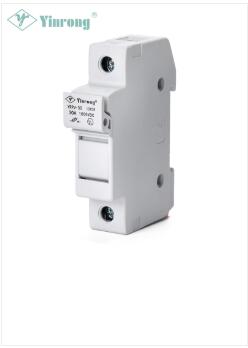What is a DC fuse holder?
2023-12-19
A DC (Direct Current) fuse holder is a component used to house and protect a DC fuse within an electrical circuit. It provides a secure and accessible housing for the fuse, allowing for easy installation, replacement, and protection of the fuse in a DC electrical system.

Key features and components of a DC fuse holder include:
1. Fuse Enclosure: The main body of the fuse holder contains the fuse and protects it from external elements. It typically consists of insulating materials to prevent electrical contact with the fuse.
2. Contacts or Terminals: These are the metal components within the fuse holder that provide the connection points for the fuse. They allow for the secure attachment of the fuse to the electrical circuit.
3. Fuse Mounting: The holder includes a mechanism or design for securely mounting the fuse within the enclosure, ensuring proper alignment and connection.
4. Access and Cover: Some fuse holders come with covers or lids that can be opened or removed for accessing and replacing the fuse. This cover helps protect the fuse from accidental contact and provides safety.
5. Connection Points: DC fuse holders are designed to be connected within the circuit, typically by soldering, crimping, or using screw terminals, ensuring a secure and reliable electrical connection.
DC fuse holders are available in various sizes, types, and voltage/current ratings to accommodate different DC electrical systems' requirements. They are commonly used in automotive applications, solar power systems, battery banks, industrial machinery, and other DC-powered equipment where protection against overcurrent or short circuits is necessary.
Proper selection of a DC fuse holder based on the electrical specifications, environmental conditions, and safety requirements of the application is essential to ensure reliable and safe operation within the DC electrical circuit.


